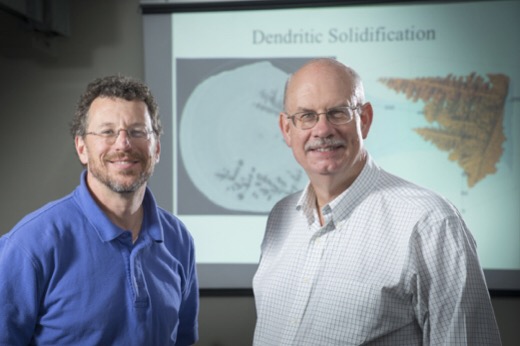Purdue-based startup could make industrial imaging systems less expensive

A Purdue innovation that could help improve efficiency and lower the costs of selective scientific imaging equipment is being commercialized by High Performance Imaging LLC.
Charles Bouman, a professor in Purdue's School of Electrical and Computer Engineering and Purdue's Weldon School of Biomedical Engineering and a co-founder of High Performance Imaging, said that the company’s technology can be of great value in advanced scientific imaging by reducing cost and increasing access.
“Many government and university research labs have very expensive scientific imaging systems such as multi-million dollar transmission electron microscopes and billion dollar synchrotrons that can probe the inner structure of material and biological samples,” he said. “These systems produce huge quantities of data that can be reassembled into 3D images of the world, but this reassembly or reconstruction process requires very intensive and very expensive high-performance computing.”
Sam Midkiff, a professor in Purdue's School of Electrical and Computer Engineering and company co-founder, said a large expense of scientific imaging equipment is due to the computational overhead.
“Most modern imaging systems require large amounts of computation to turn the data from the machine’s sensors into useful images. Currently, many organizations have to sacrifice image quality or the number of images produced because they lack the computing resources to apply more advanced iterative methods that require more computation,” he said. “You either need to spend a very long time on one computer, or you have to spend the money to buy a very large computer with hundreds or thousands of processors to be able to carry out the required computations.”
High Performance Imaging has developed a new class of algorithms that harness the full computational horsepower of a computer processor and use parallel operations to improve imaging efficiency and reduce costs of imaging systems.
“The hardware that does the imaging is already out there; our technology just better exploits it to make the algorithms run much faster by producing 20 times more effective use of the resources, thus processing more data in less time,” said Bouman. “Modern processors may have well over 1,000 processing units in a single chip, so we're developing an approach that allows us to efficiently split the problem across many thousands of processors. Our company is the first to address this problem of making iterative reconstruction methods practical.”
Bouman said that High Performance Imaging's technology could also benefit other industries.
“Many different industry sectors need to form images in their daily operations,” he said. “In addition to scientific imaging, the technology has great potential in the transportation security industries that need to form images quickly to maintain security at airports, and also nondestructive testing for additive manufacturing of parts for aerospace applications.”
Technology used by High Performance Imaging has been licensed through the Purdue Research Foundation Office of Technology Commercialization. More than 20 startups based on Purdue intellectual property were launched in the 2015 fiscal year.
Anand Raghunathan, professor of electrical and computer engineering, and Sherman Kisner, a research scientist in Purdue's College of Engineering are also co-founders of the company. Kisner, CEO of High Performance Imaging, said that the company is ready to move into the next stage of development.
"We're excited to start collaborating with potential customers to engage in joint development," said Kisner, "We want to reach the highest performance level possible, and are looking for capable software developers to help us do so."
For information on other Purdue intellectual property ready for licensing and commercialization, visit http://www.otc-prf.org. For more information about available leadership positions, investing in a Purdue startup or licensing a Purdue innovation, visit http://www.purduefoundry.com.

 How to resolve AdBlock issue?
How to resolve AdBlock issue?